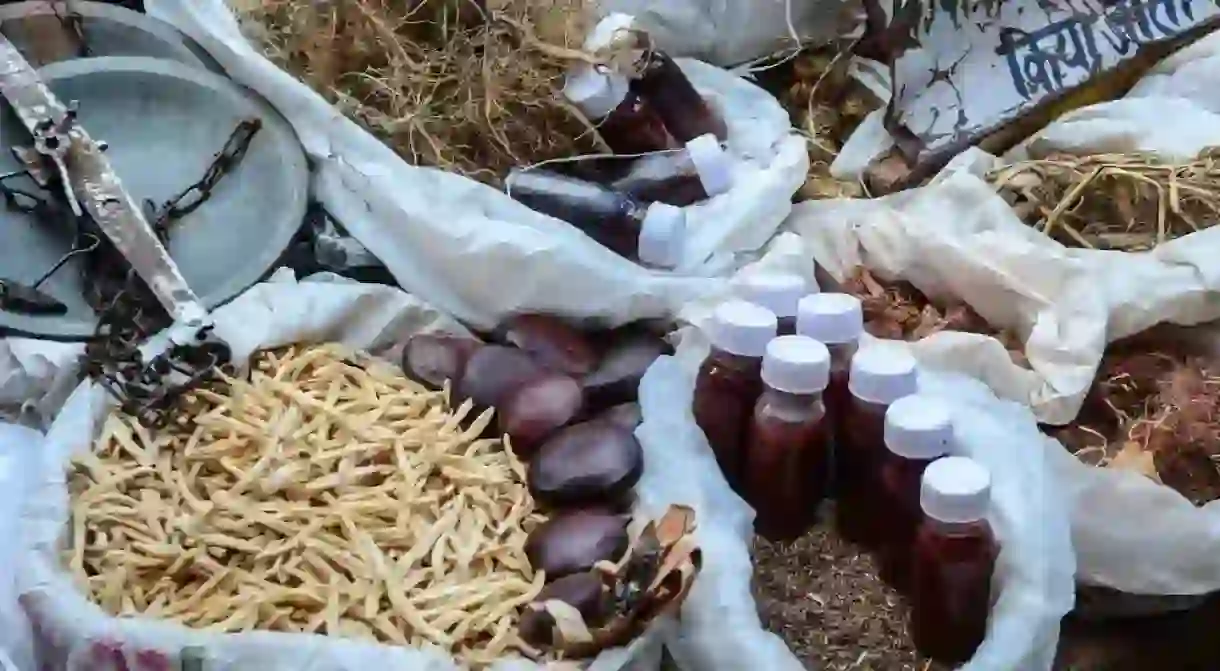11 Reasons to Visit Chandni Chowk, One of India's Oldest Markets

The serpentine lanes of Chandni Chowk can be overwhelming to a first-timer. But once you adjust to the hustle and bustle, you’ll find yourself drawn to the whimsical allure so unique to this old city— here are 11 reasons why Chandni Chowk is a must-visit.
For Paranthe Wali Gali
Paranthe Wali Gali welcomes its visitors with an earthy whiff of spices and desi ghee (local butter) and a constant sizzle and spattering of food being deep-fried. This narrow lane filled with pocket-sized shops selling the Indian stuffed bread called paranthas is never short of patrons. Pandit Gaya Prasad Paranthewala, opened in 1872 and today sixth generation successors run the street food business. You can find paranthas stuffed with regular fillings like potato, cauliflower, peas and radish to offbeat ones like cashew, papaya, dried raisins and bitter gourd, for not more that $1 per plate!

For gorgeous silver jewellery
Close to Paranthe Wali Gali, is the 17th century market of Dariba Kalan. The name of the market means the ‘street of the incomparable pearl’. During Mughal emperor Shah Jahan’s time, Dariba Kalan was lined with shops that sold all kinds of trinkets and precious stones. Today, it’s mostly known for beautiful silver jewellery priced much more affordably than you’d normally find in other Delhi markets.
For traditional perfumes
While in Dariba Kalan, Gulab Singh Johri Mal is one unmissable place. No, it’s not an ornaments store but the oldest perfumery of Delhi. The 200-year-old perfumery is now run by the seventh generation decedents of the founder Gulab Singh, who is believed to have sold his craftsmanship to Mughal emperors and court nobility of yore.
For Asia’s largest wholesale spice market
Khari Baoli is a street near the Red Fort. The market here was built in 1650 by Fatehpuri Begum, one of Shah Jahan’s many wives. Through the years, Khari Baoli has grown to become the largest spice market in Asia and is awash in warm aromas and kaleidoscopic colours. Along with a variety of local spices, nuts, dry fruits, herbs, grains and pulses, at Khari Baoli you can find items as exotic as dried mulberries shipped all the way from neighbouring Afghanistan.

For India’s biggest camera market
Kucha Choudhary Market, simply known as the Photo Market by the locals is a treasure trove of photographic equipment. While the shops may look deceptive, cameras, lenses, tripods and other paraphernalia of every brand and in every price range imaginable is to be found here.
For Natraj’s dahi bhalla
Dahi bhalla is a favourite North Indian snack which is a type of deep fried croquets made from green bean paste and spices. This is then served cold with curd and tamarind sauce. There’s a widespread acceptance among the city folks that one of the best dahi bhalla is to be found at Natraj’s in Chandni Chowk. It’s not just the taste but the typical experience of eating Indian street food while standing on the pavement, often after having had to wait in a queue, that adds to the fun experience.
For wedding shopping
It’s a common sight to find soon-to-be brides and grooms scouring the by-lanes of Chandni Chowk. Apart from gorgeous dresses, the market is also an ideal place to find all sorts of odds and ends required at an Indian wedding, from accessories to decoration and catering companies.

For fabrics at Katra Neel
Historically, this neighbourhood was a hub for indigo manufacturers and traders and now is a wholesale market for cloth. It is best known for its menswear retail stores. In fact, Raymond, India’s leading menswear fabric retailer, set up its first franchise of Old Delhi right here. The quaint remains of the bygone Mughal architecture also add to the charm of the place.
For inexpensive pre-owned books
Nai Sarak, which literally translates from Hindi to “new road” was constructed by the British after the Indian Rebellion of 1857. Pre-owned educational textbooks and fiction titles are found aplenty here. Facing stiff competition from e-commerce stores, the book sellers of Nai Sarak have been feeling the pressure of late, but this should give visitors more reason to visit this much-loved street of Chandni Chowk.
For a spiritual experience
One of the most special qualities about Chandni Chowk is the religious and communal harmony that has been preserved here for years. The number of religious places of worship in this crowded area is a testimony to this fact. Whether it’s Hindu temples, Muslim mosques, Sikh gurudwars or Christian churches, all faiths peacefully co-exist in Chandni Chowk.

For the ancient havelis
Havelis are historic mansions and Chandni Chowk is home to many of these ancient buildings. However, most of them are now hidden under the guise of modern shops. Take Begum Samru’s Palace for instance. Built in 1806 for one of the most famous nautch girls during the Mughal era, it now houses an electronic goods shopping complex. Then there’s Lala Rai Chunna Mal, the wealthiest man in 19th century Delhi, and his 130 room haveli. There are many such hidden gems in Chandni Chowk, several of them, unfortunately, in dilapidated states. But it’s still worthwhile to take a day and tour these havelis for a rare experience.














